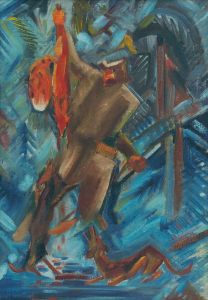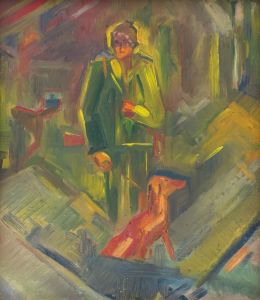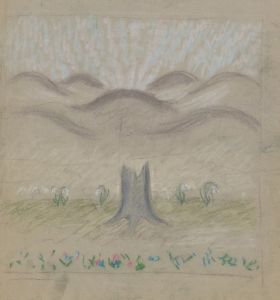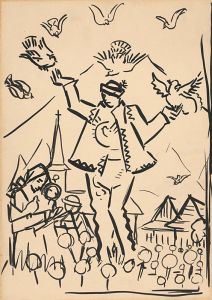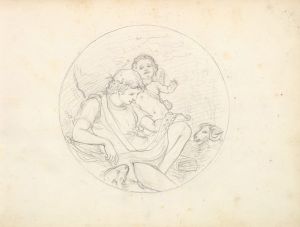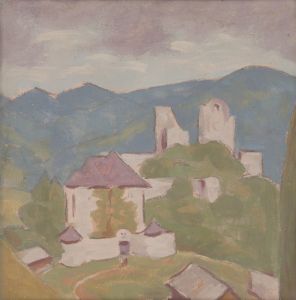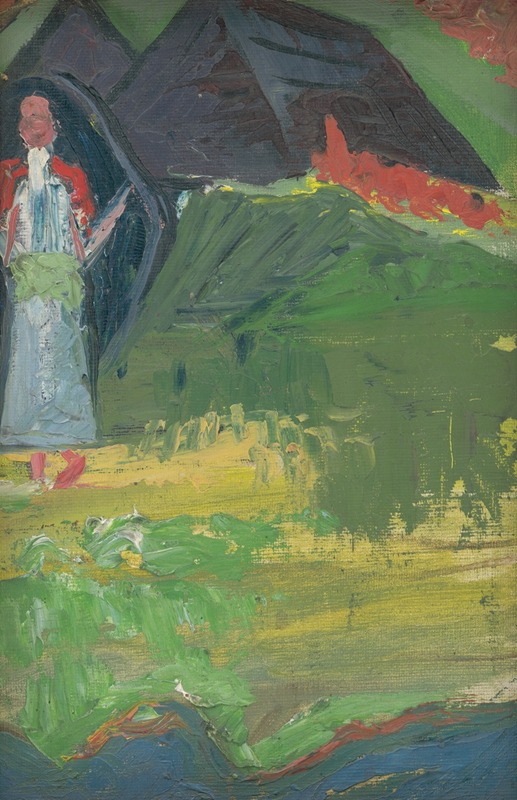
Girl in front of a Shepherd’s Hut
A hand-painted replica of Arnold Peter Weisz-Kubínčan’s masterpiece Girl in front of a Shepherd’s Hut, meticulously crafted by professional artists to capture the true essence of the original. Each piece is created with museum-quality canvas and rare mineral pigments, carefully painted by experienced artists with delicate brushstrokes and rich, layered colors to perfectly recreate the texture of the original artwork. Unlike machine-printed reproductions, this hand-painted version brings the painting to life, infused with the artist’s emotions and skill in every stroke. Whether for personal collection or home decoration, it instantly elevates the artistic atmosphere of any space.
Arnold Peter Weisz-Kubínčan was a Slovak-Jewish modernist painter whose works are often associated with the interwar period and reflect a unique blend of modernist and expressionist styles. Among his known works is the painting Girl in front of a Shepherd’s Hut. This artwork exemplifies Weisz-Kubínčan’s ability to capture human emotion and the relationship between individuals and their environment.
Girl in front of a Shepherd’s Hut depicts a young girl standing in front of a rustic shepherd’s hut, set against a rural backdrop. The painting is characterized by its vivid colors and expressive brushstrokes, which are hallmarks of Weisz-Kubínčan’s style. The composition reflects his interest in rural life and the human connection to nature, themes that were prevalent in his body of work. The girl’s posture and expression convey a sense of introspection, while the surrounding environment emphasizes simplicity and a connection to traditional Slovak culture.
Weisz-Kubínčan’s life and career were tragically cut short during the Holocaust. Born in 1898 in Dolný Kubín, Slovakia, he was a prominent figure in the Slovak art scene during the 1920s and 1930s. His works often explored themes of identity, spirituality, and the human condition, influenced by his Jewish heritage and the socio-political climate of the time. During World War II, as Nazi persecution of Jews intensified, Weisz-Kubínčan was deported and ultimately murdered in 1944. Much of his work was lost or destroyed during this period, making surviving pieces like Girl in front of a Shepherd’s Hut particularly significant.
The painting is now considered an important example of Slovak modernist art and serves as a testament to Weisz-Kubínčan’s artistic legacy. It is preserved as part of efforts to honor his contributions to art and to remember the cultural losses suffered during the Holocaust. While specific details about the painting’s creation, such as its exact date or the identity of the girl depicted, are not documented, the work continues to be appreciated for its artistic and historical value.
Due to the scarcity of surviving information about Weisz-Kubínčan’s life and oeuvre, much of his work remains under-researched. However, Girl in front of a Shepherd’s Hut stands as a poignant reminder of the artist’s talent and the enduring impact of his vision.







